WHO would have thought that the frumpy, upright hatchback launched by Mercedes-Benz in the late 1990s would wind up having such an interesting journey?
Now 21 years old, the Mercedes-Benz A-Class nameplate has morphed from grocery-getter to perhaps one of the hottest hatches on the planet – and the next generation model promises to take the A-Class to new, more luxurious heights.
From humble beginnings to high-end aspirations, here’s everything you need to know about one of Benz’s most intriguing – and strategically important – models.
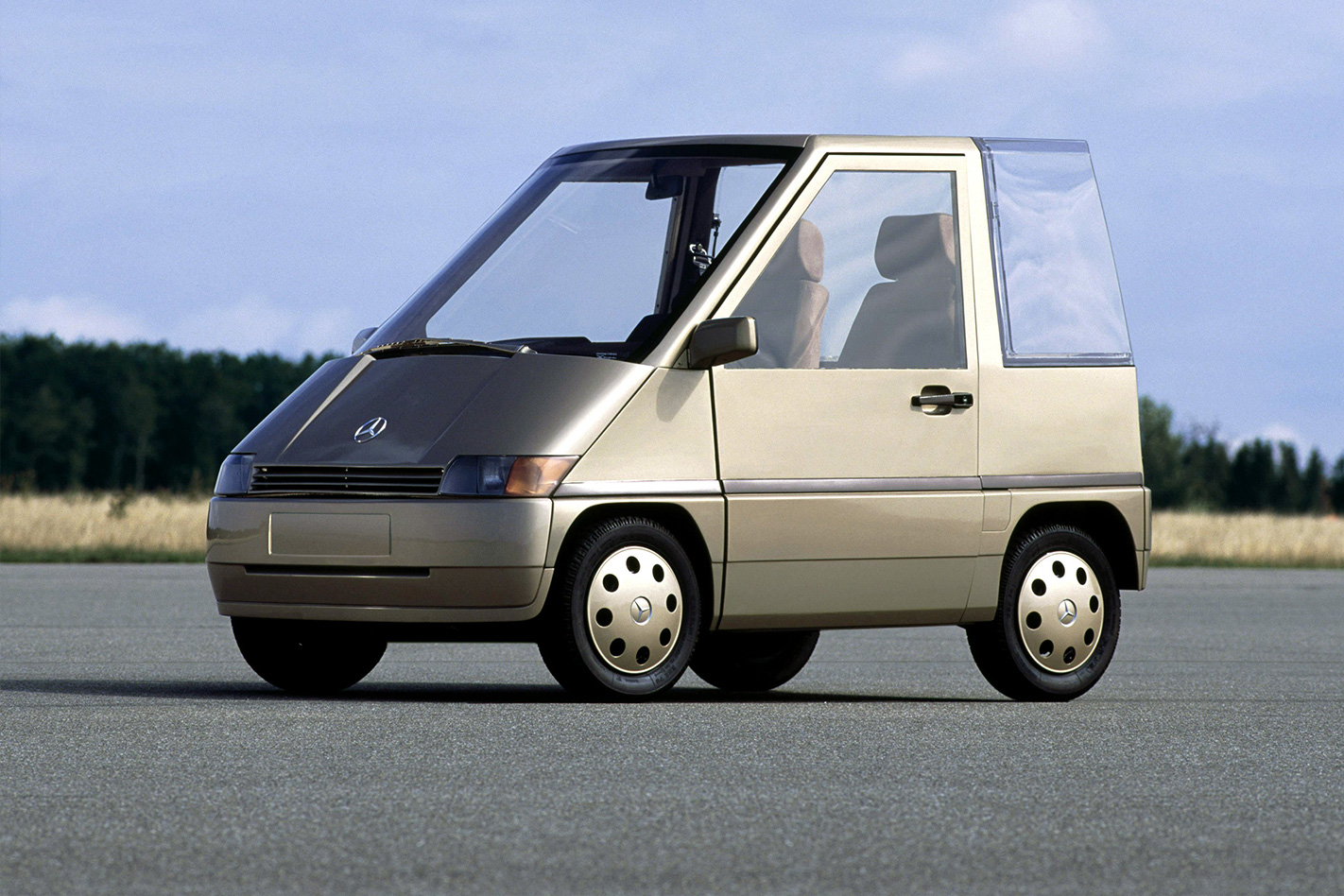
It looked like it rolled straight off the set of some dystopian movie too.
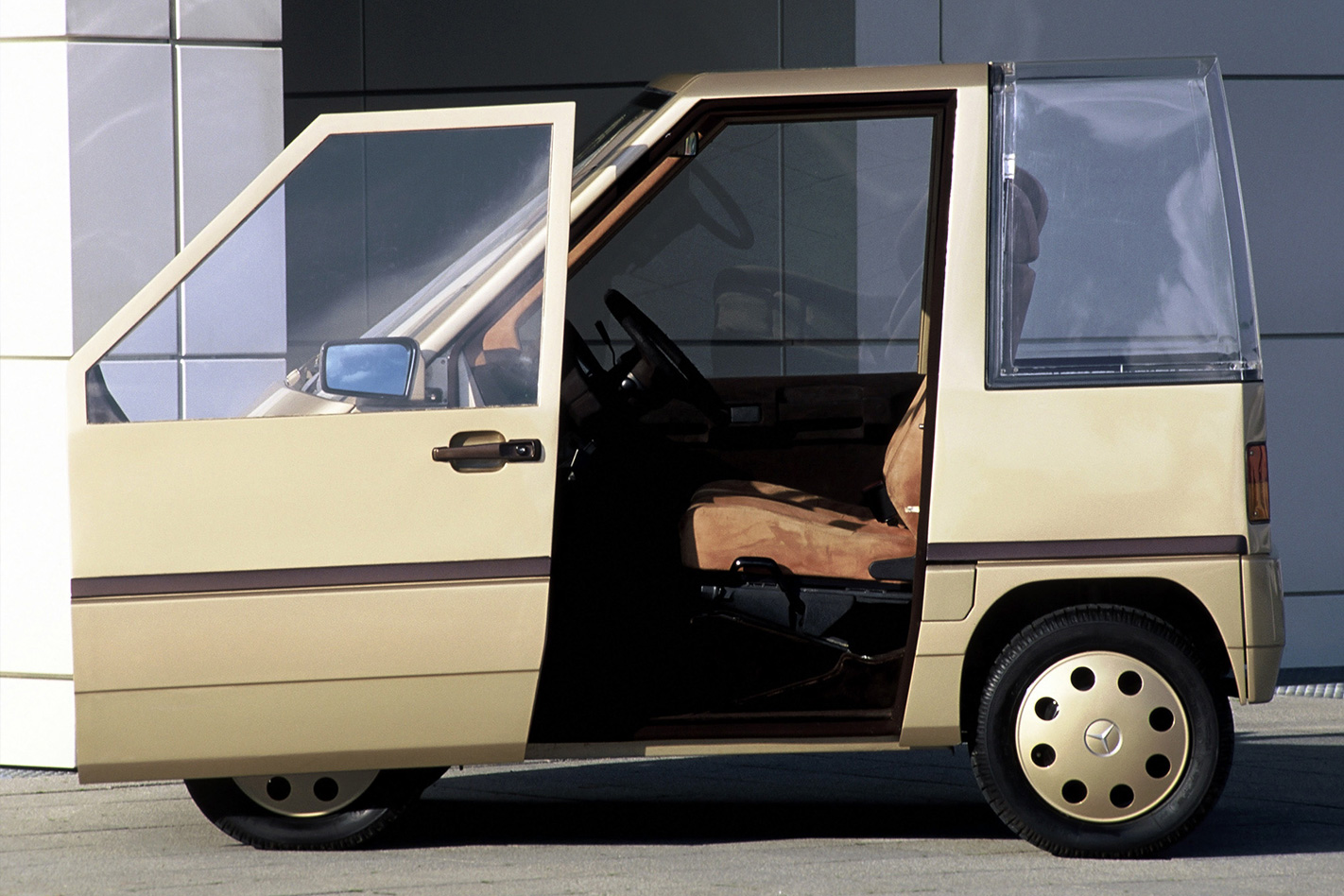

The styling would evolve a lot further before the production A-Class finally showed its face in 1996, however the Vision A93 set the template – tall body, five doors, and an innovative architecture underpinning it all. Read on.
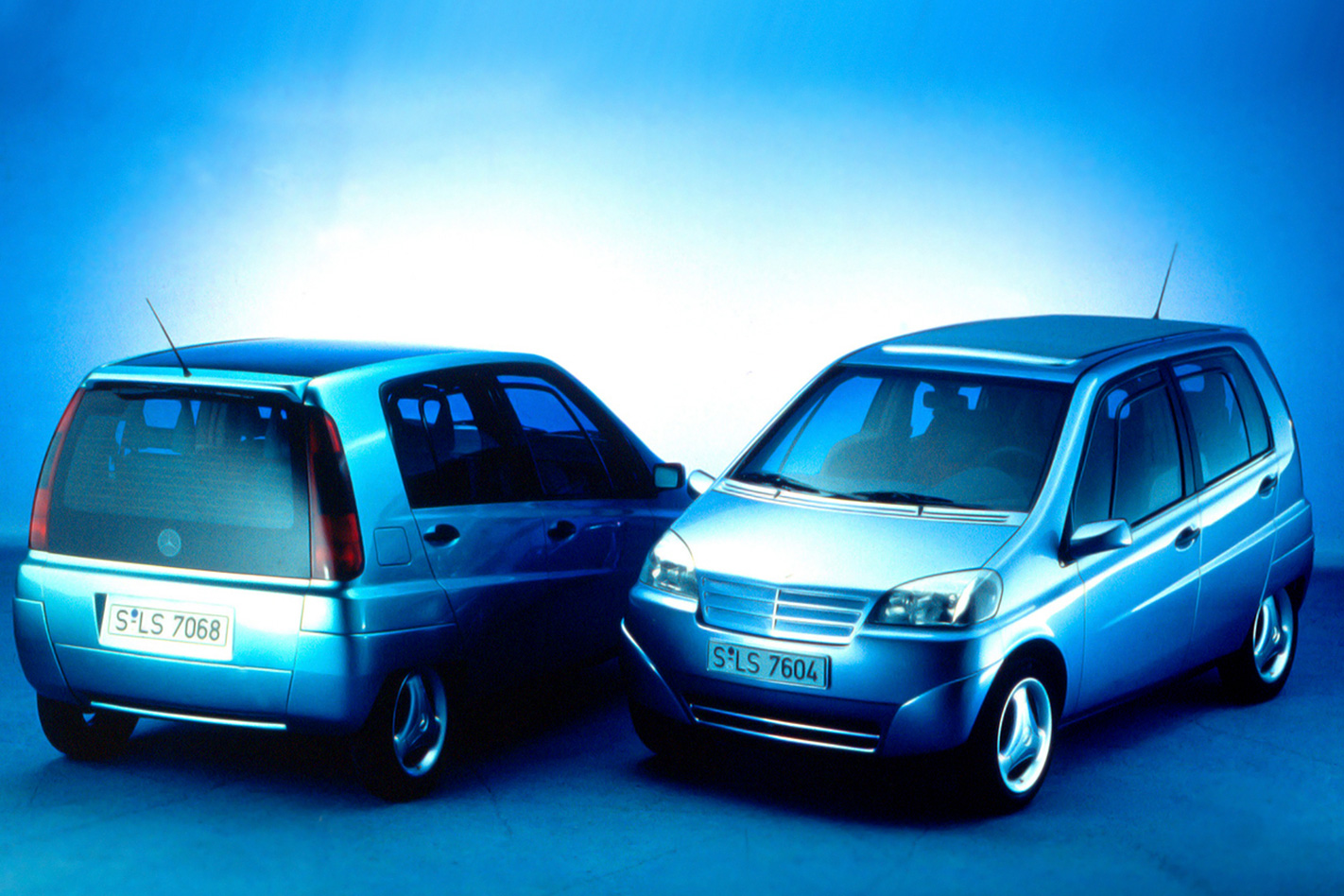
First generation – W168, 1997-2004
Debuted as Benz’s answer to Audi’s Golf-based A3 that arrived in Europe in 1996, the A-Class’ primary mission was to give prospective owners a means of putting a three-pointed star in their garage without having to spring for the bigger C-Class.
And it represented a major shift in thinking for Mercedes. Not only was it the first front-wheel drive hatchback to roll into its showrooms, which up until that point had been filled with longitudinally-engined, rear-driven sedans, wagons and coupes, but it also debuted a fairly revolutionary platform.
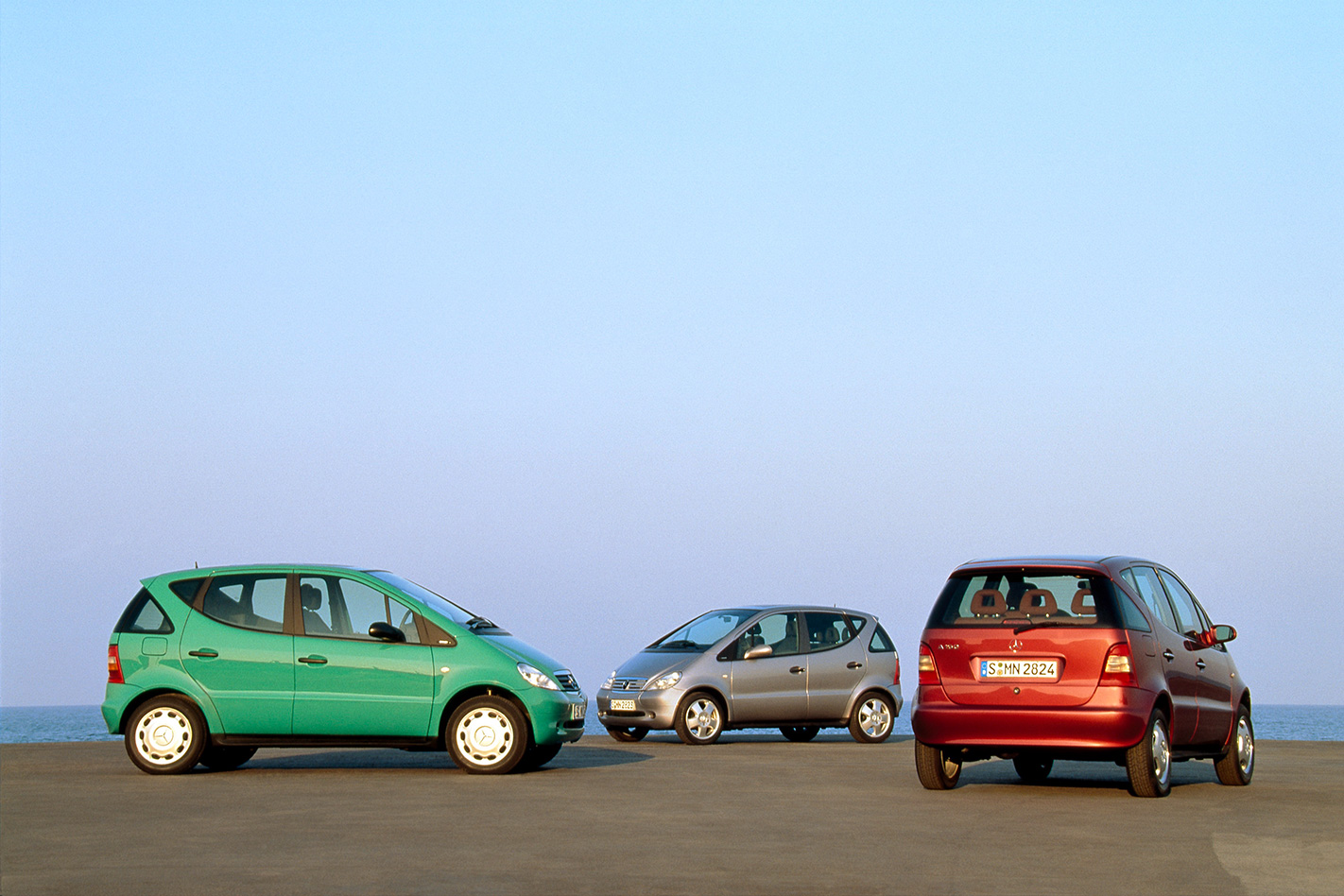
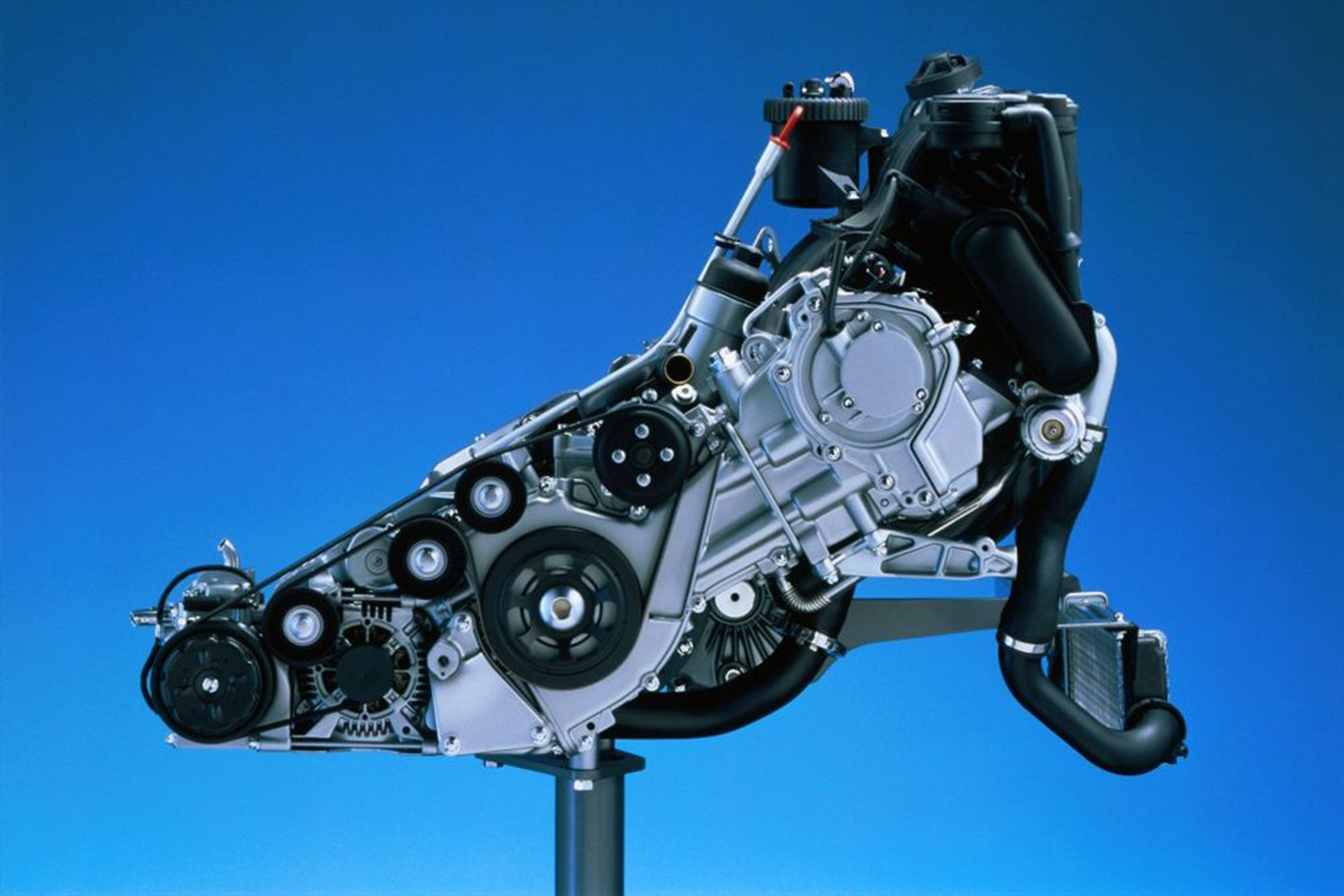
Not only did it allow Benz engineers to give the A-Class a cabin that was almost as long as the vehicle itself, but it also enabled the car’s mechanical package to slide underneath the cabin in the event of a crash, rather than push through the firewall.
Safety, then, was a high priority for the A-Class, however that all came undone once Swedish magazine Teknikens Varld capsized a press car while conducting their infamous ‘Elk Test’. Inherent instability issues with the top-heavy and narrow-tracked A-Class were exposed, and weren’t rectified until Mercedes modified the suspension calibration and added electronic stability control.
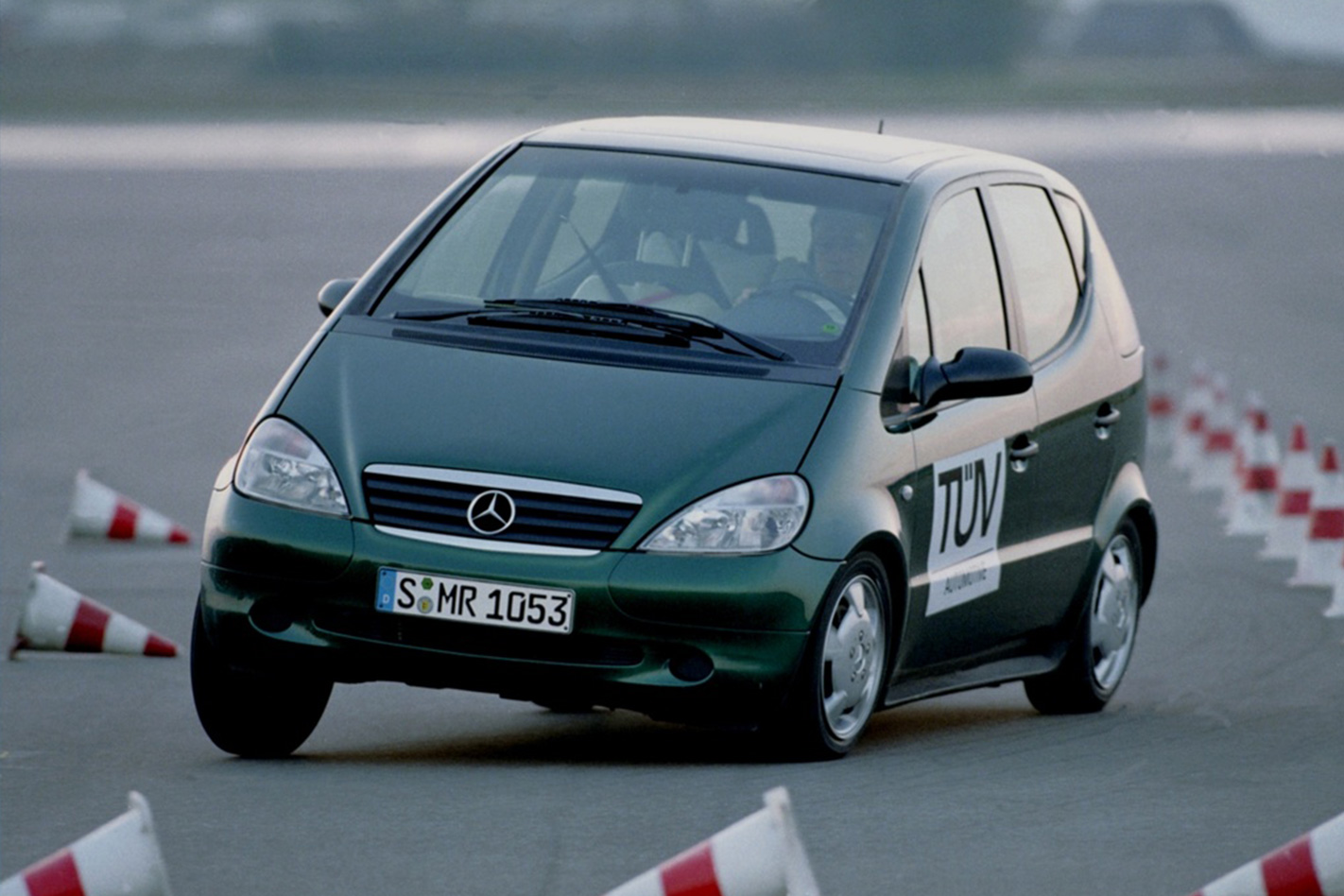
The madcap device had the requisite bodywork and AMG-tuned suspension yet still retained a functional boot space. Only four are believed to have been made – two of which are said to be in Australia.
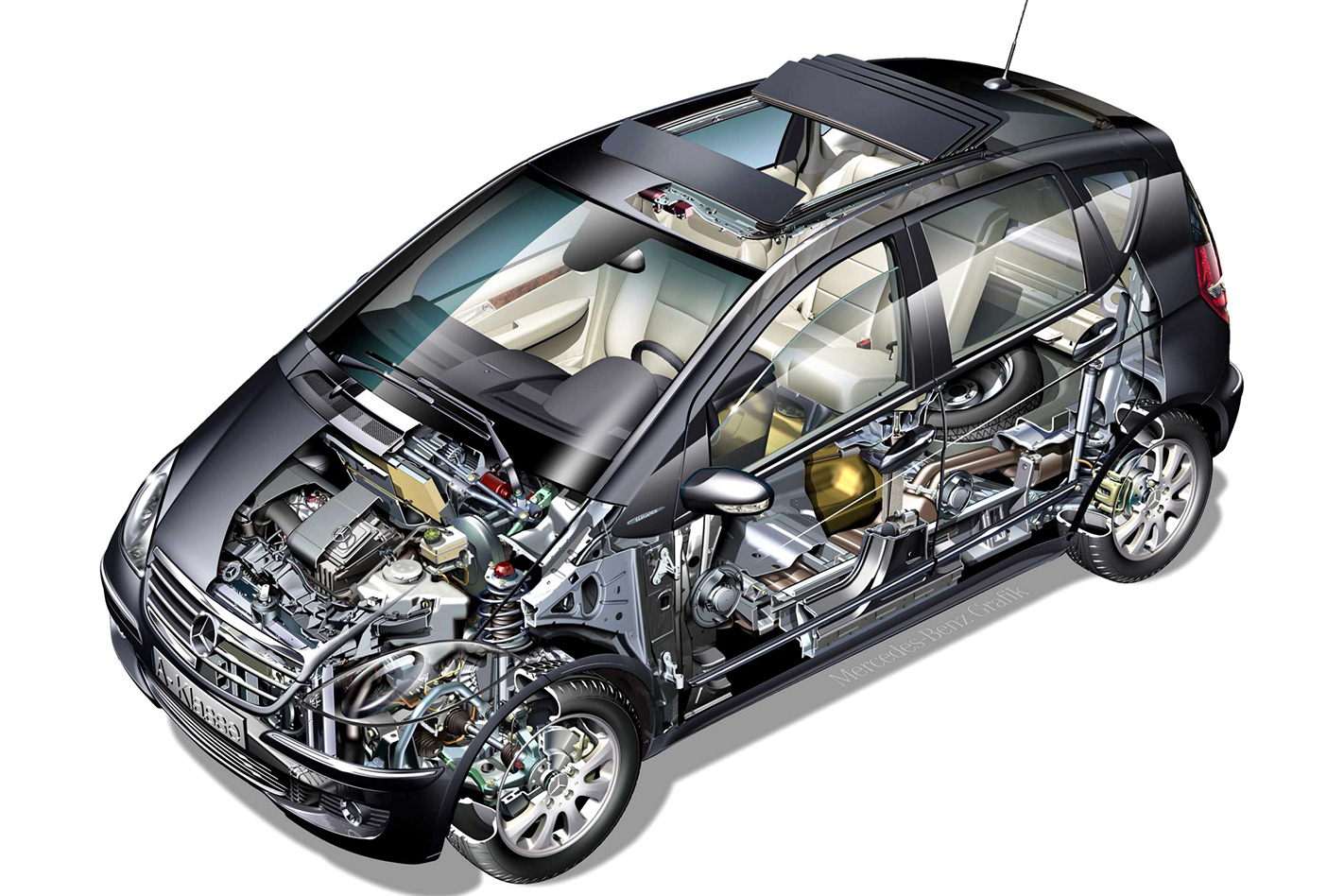
Second generation – W169, 2004-2012
The second incarnation of the A-Class continued to utilise Benz’s Sandwich platform, however the design matured as Benz moved away from the organic curves of its late-90s lineup and toward a sharper design language.
A three-door bodystyle was added, the C-pillar lost its funky twin-window graphic and the headlamps became pinched to impart a sleeker look to what was still a fairly awkward and egglike form.
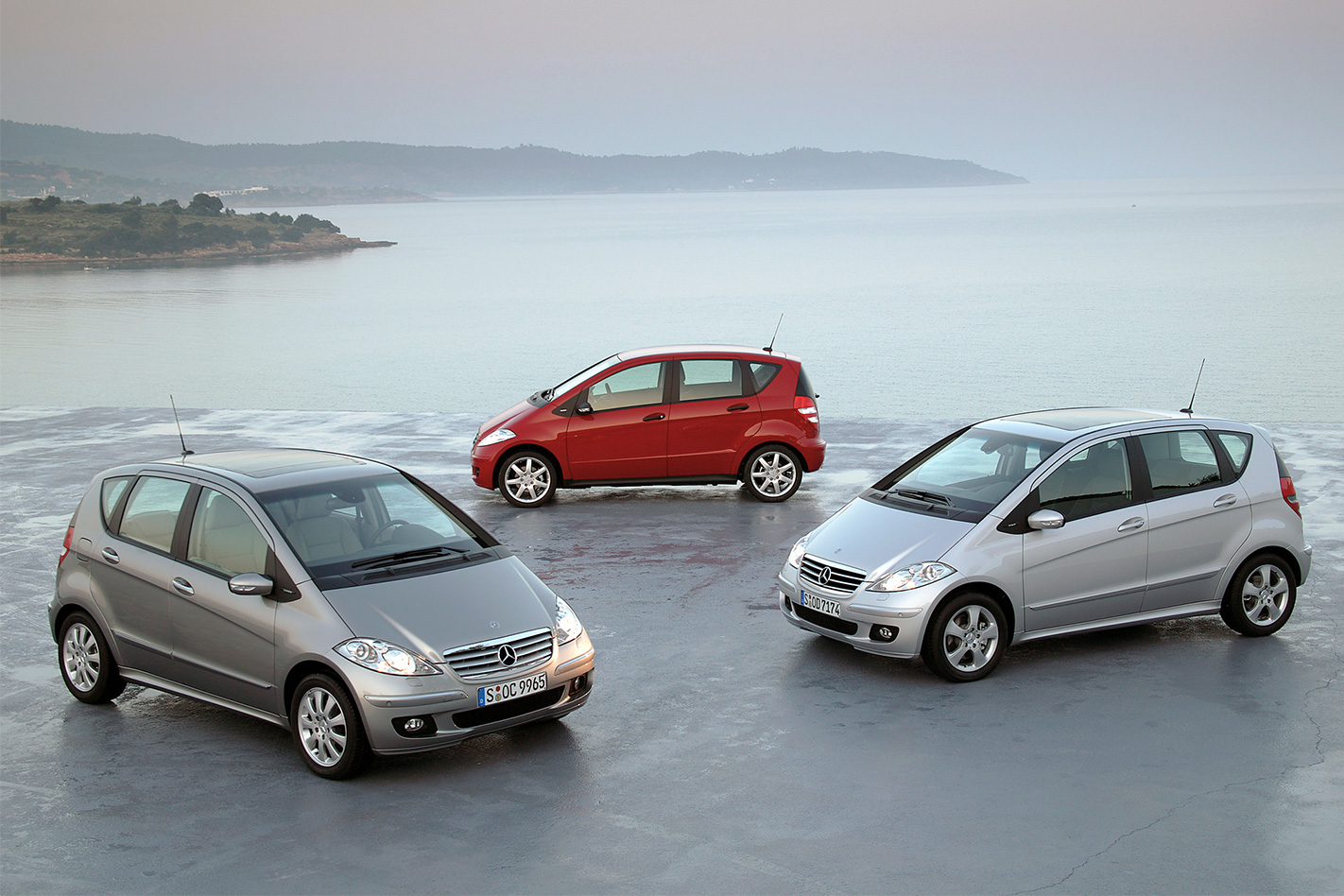
The potential of the Sandwich platform was explored further in 2010 with the A-Class E-Cell, a low-volume pure electric car that was never retailed, but was leased as part of an EV trial to select customers in Europe.
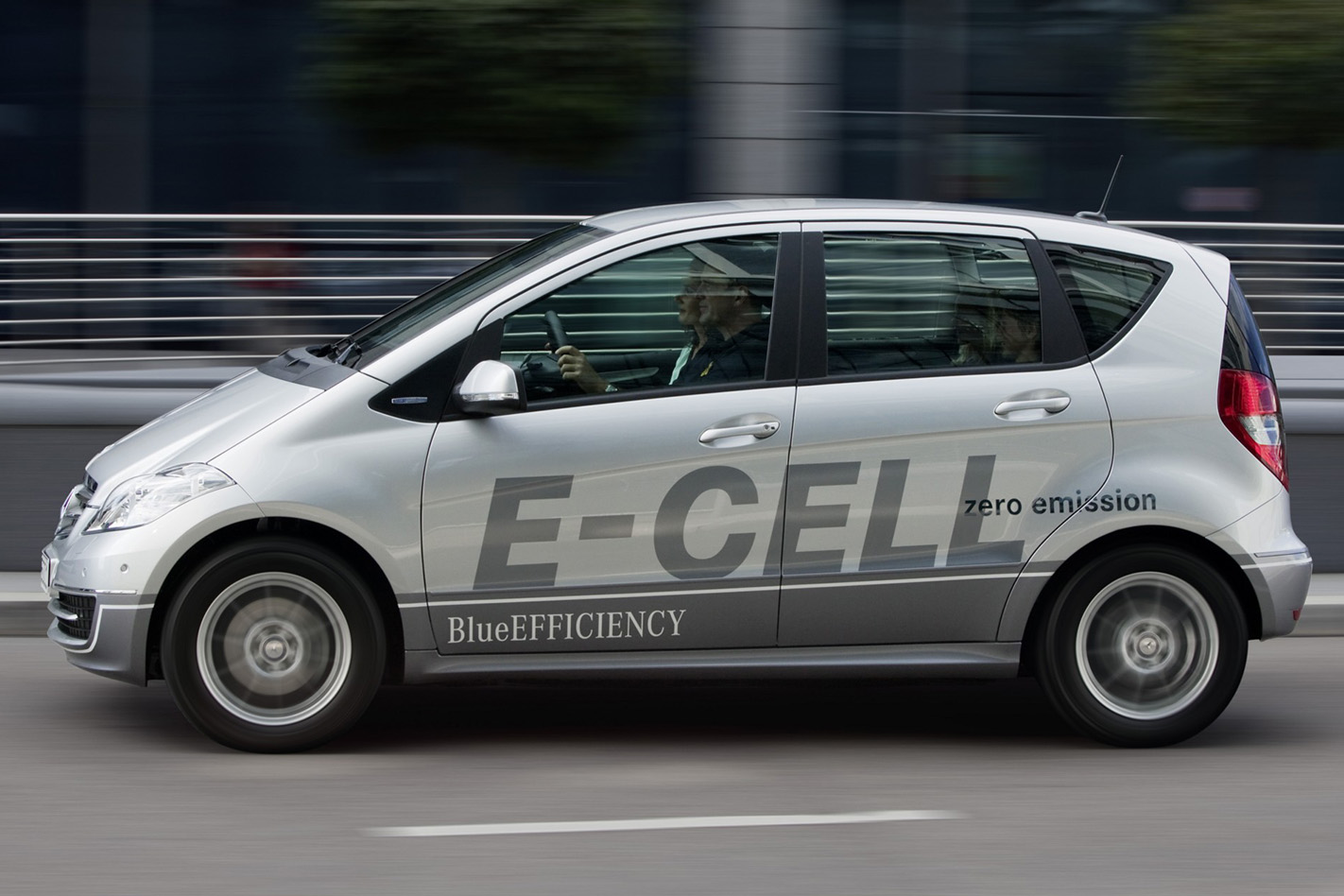
It was also the fastest A-Class to date, with a 5.5-second 0-100km sprint time putting it 0.2 seconds ahead of the twin-engined A38 AMG.
Third generation – W176, 2012-2018
In an effort to boost the appeal of the A-Class among younger, more aspirational buyers – and a tacit admission that the first- and second-generation models were about as visually interesting as a block of commission houses – Mercedes moved away from the ground-breaking Sandwich platform when it wheeled out the third-gen A. In the process, a huge 150mm was chopped from the car’s overall height and 409mm added to its overall length.

Since the third-gen A-Class launched in 2012, MFA has since gone on to underpin the CLA four-door coupe and shooting brake, the GLA small SUV and the Infiniti Q30/QX30.
And the move to a newer, more conventional platform brought new technology, such as all-wheel drive that didn’t require an extra engine to be grafted on by AMG’s madmen.
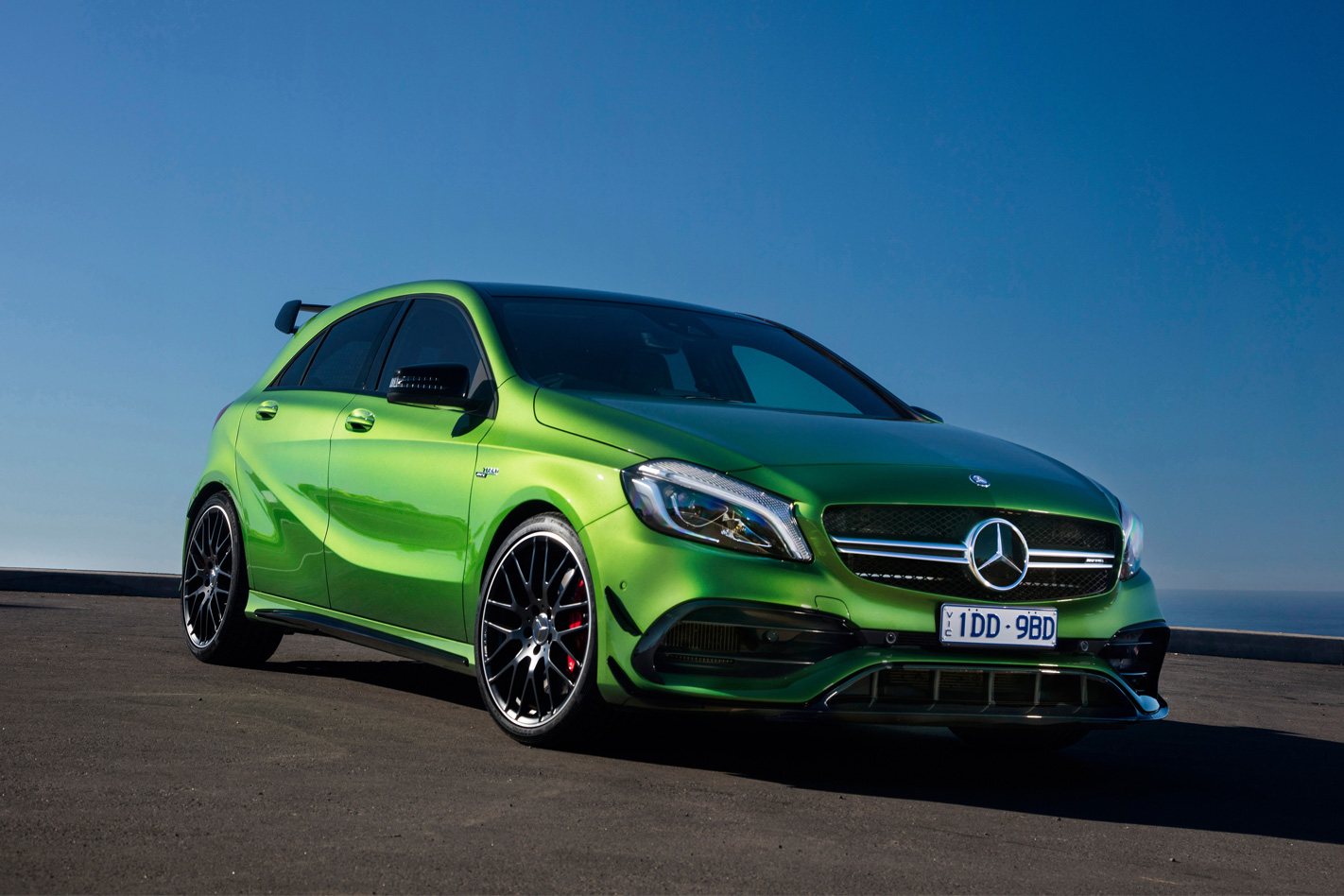
Beneath the mighty A45 was the A250 Sport, which arrived first as a front-driver before gaining more power (160kW/350Nm in total) and an extra set of driven wheels in a mid-life update that added 4Matic AWD. Other models in the range are less powerful, but Benz went to great lengths to impart a much sportier flavour in every variant’s appearance and handling in order to attract a younger clientele.
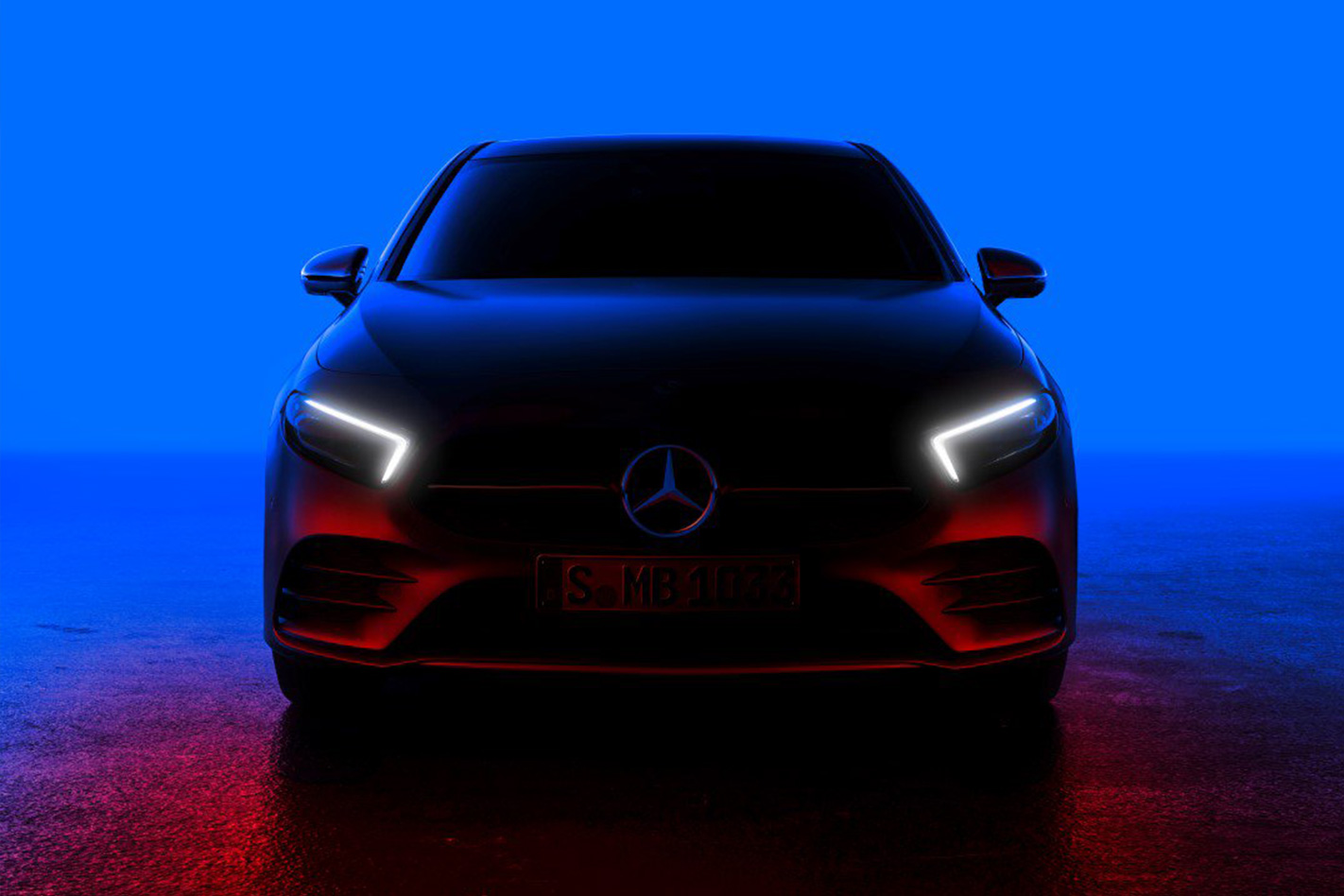
Fourth generation
The fourth-gen model is being revealed later this week to the world’s media, and we’ll be there to cover it. What we know so far is this: Benz is aiming for it to have the most premium-feeling cabin in its segment, and will use it to debut its latest-generation infotainment suite. The days of the S-Class being the tech leader for Benz appear to be over.
A sedan bodystyle is also expected, which will be a first for the A-Class. Until now, the CLA has filled the role of a four-door C-segment vehicle in the Mercedes lineup.

And from what we’ve seen of the design, the new A-Class should look more dignified and elegant than before – a far cry from its awkwardly lanky beginnings.





